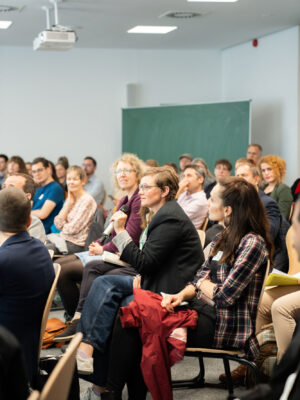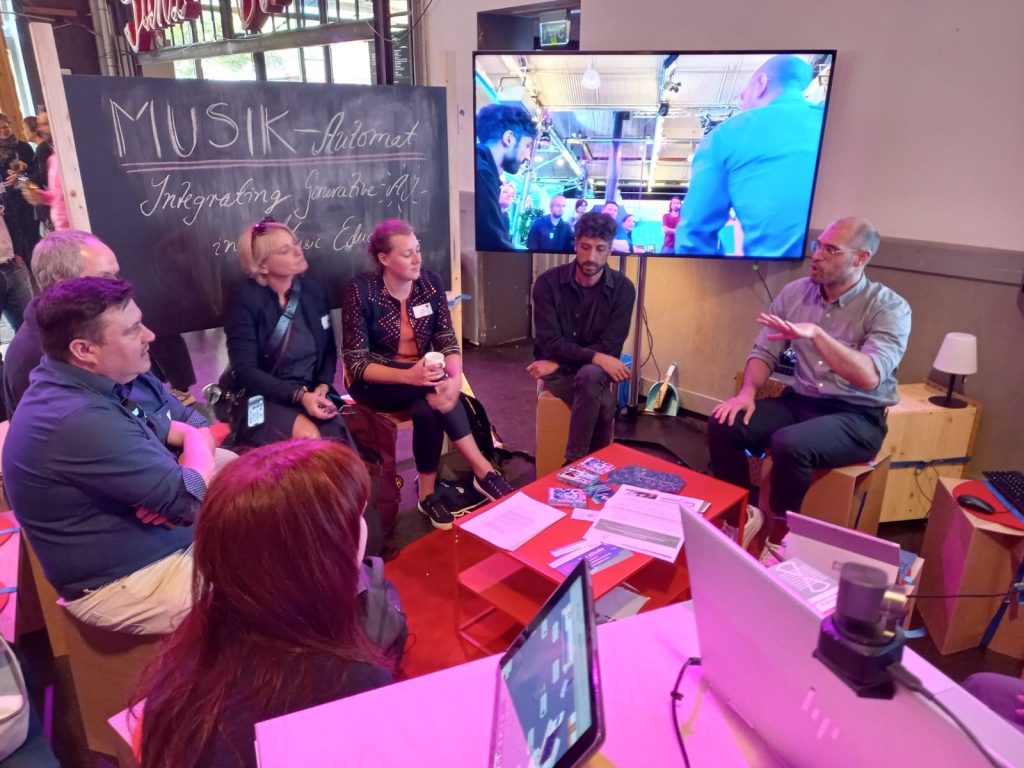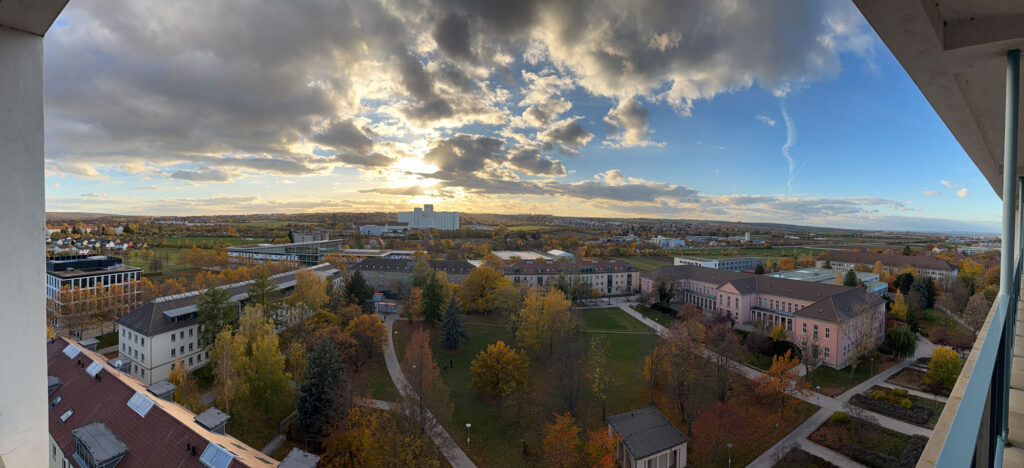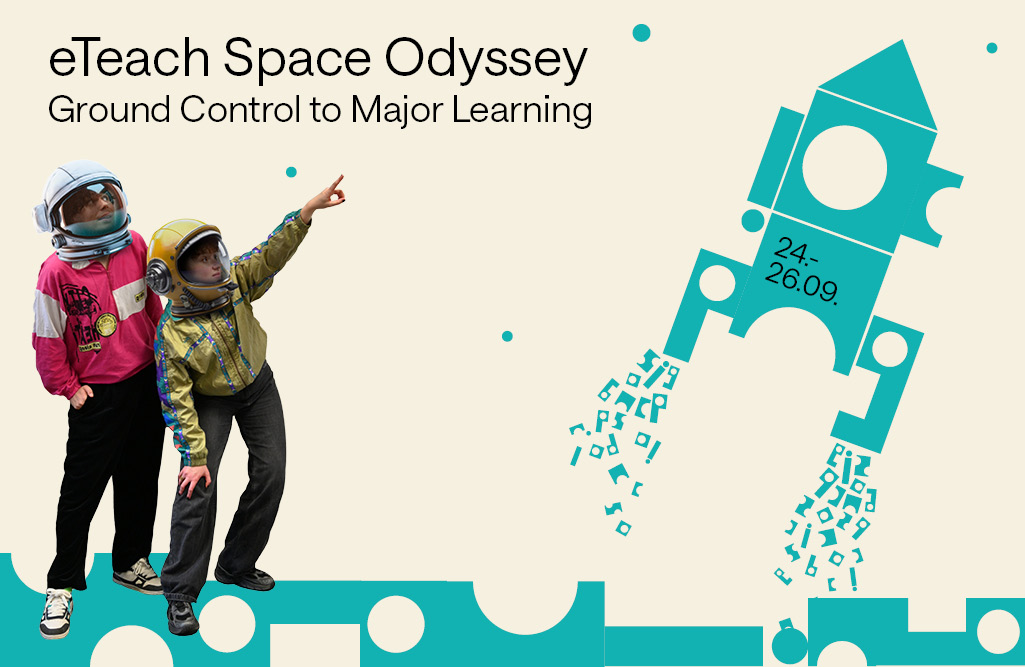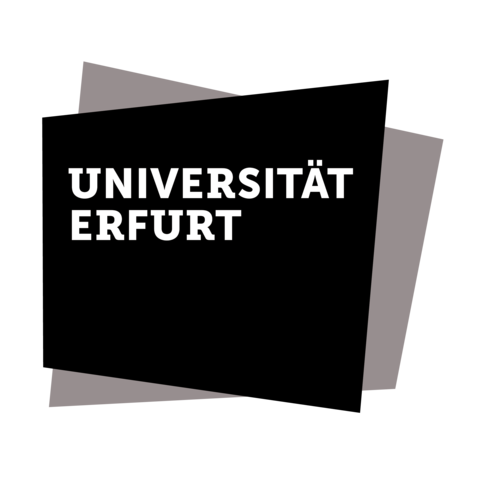(Inter)spaces are formative learning companions
The conference "Spacing- learning between spaces." opened up a multifaceted field of real, virtual and hybrid learning and teaching spaces over three days - and above all, it was exciting to observe what happened in the transitions, in the spaces between the spaces.
In addition to keynotes and lectures, the program included practical and interactive formats such as workshops, theme islands, a pitch session with poster walk, an exhibition and a campus quiz. However, the encounters between the formats were particularly inspiring: Conversations during the breaks, paths across the campus, insights into real teaching and learning spaces as well as digital connections that gave rise to moments in which new ideas and surprising perspectives emerged.
What makes teaching and learning spaces productive?
Key criteria can be derived from the discussions and contributions at the conference. Productive spaces - whether analog or digital - are above all flexible and changeable. Movable furniture, changeable equipment or multifunctional surfaces open up scope that may seem unusual at first, but often unleash creativity. The sensory dimension also shapes learning: light, color, materials, acoustics and atmosphere have a decisive influence on concentration, well-being and motivation.
Rooms are more than mere shells; they can themselves become part of the cognitive process. When work steps are made visible - for example through writable walls, whiteboards or digital surfaces - transparency and a feedback culture are created. Productive learning spaces also promote interdisciplinarity and cooperation, create space for movement and playful experimentation, and they must be barrier-free and technically reliable so that everyone can participate. Finally, there is the question of future viability and sustainability: how can spaces be designed in such a way that they will also serve future generations - flexibly, in a way that conserves resources and is open to nature and the outdoors?
Universities face a number of challenges in responding to changing requirements in order to create participative environments that are conducive to creativity and learning.
Highlights & central impulses
The symposium opened with a panel discussion "Not everything as before. On the design of spaces, universities and futures"which made it clear how much the environment, architecture and interior design influence the quality of teaching and learning success.
In his keynote speech "Between innovation and reflection: Responsible design of hybrid learning environments" Armin Grunwald emphasized that technical innovation should never be conceived without ethical reflection. Concepts such as anticipatory governance, scenario building and reversibility can help to steer developments sustainably and responsibly.
According to Grunwald, the future is not something that simply happens, but something that is made - it needs shaping forces in the here and now. This makes it all the more important for universities to sensitize students to this task.
In the keynote speech by Dr. Brian Ballsun-Stanton ("How Teaching Is Getting Weirder - and Why That's a Good Thing") showed how uncertainty, irritation and the unexpected - e.g. through AI - are not just disruptions, but offer opportunities for learning, judgment and metacognition. His approach of turning students into active creators through visualized prompt work, reflection and discourse was particularly impressive.
The exhibition "(will soon) return with new questions, like ..." showed artistic-research works that focused on questions rather than answers and thus opened up new spaces for thinking. Questioning one's own actions - their sustainability, their interventions in existing structures and their often subtle, barely visible gestures of change - is the basis for creating new (learning) spaces.
Challenges & open questions
In addition to many positive impulses, areas of tension also came to light: How can change be made possible without technology becoming a hurdle? How can digital and virtual spaces be designed inclusively - both technically and didactically? How can a culture of error and experimentation be institutionally supported where universities are highly formalized? And how can sustainability succeed in the midst of constant change? How can teaching formats change in order to react confidently to the influence of artificial intelligence?
Balance sheet & outlook
The conference spacing - learning between spaces. showed that rooms are far more than just architecture, furniture or technology: they are co-creators of teaching and learning. They shape experiences, open up opportunities, promote creativity, reflection and community. Learning takes place not only in the seminar room, but also in the spaces in between - where curiosity, experimentation and encounters come together. Universities are called upon to consciously design these spaces: flexibly, inclusively, sustainably and with openness for future generations.
Guidelines can be formulated for the future:
Understanding spaces as living networks; combining innovation with reflection on values, accessibility and impact; opening up spaces for experimentation and failure; promoting inclusive, barrier-free and flexible spatial design; and finally, understanding nature and outdoor spaces as an integral part of learning.
Photo gallery
Photos by Tarek Rishmawi and Julia Schöffel
